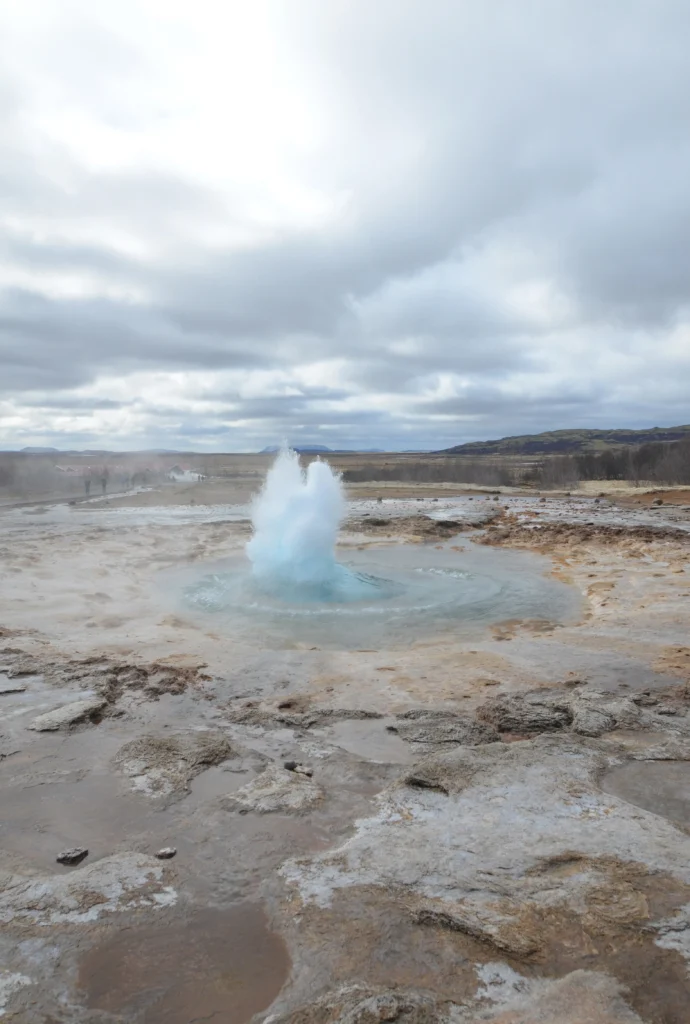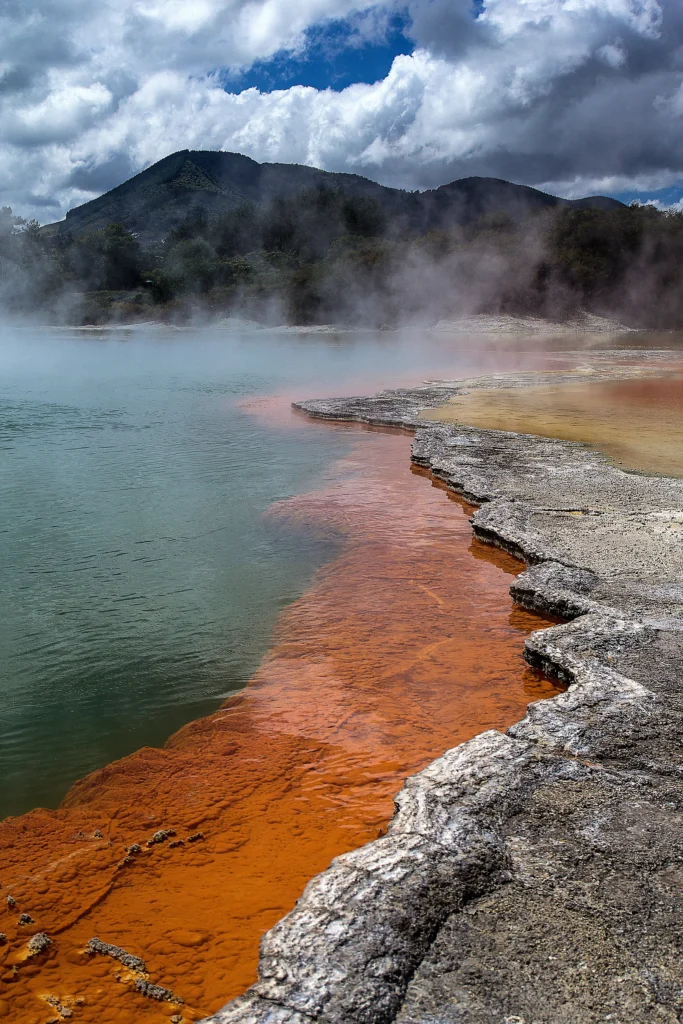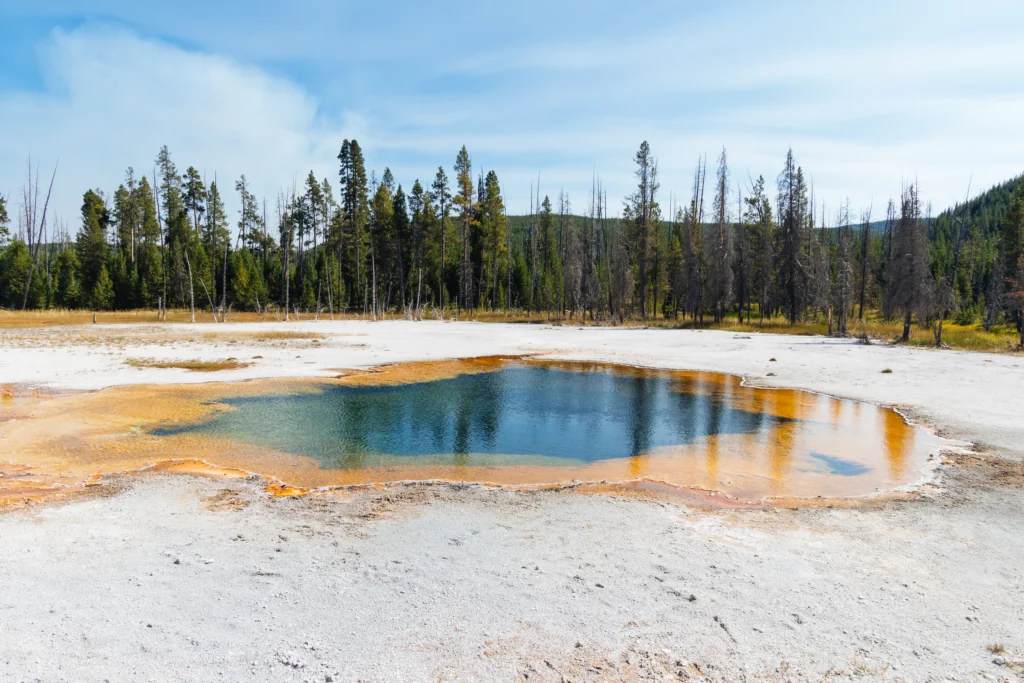Yellowstone National Park recently captured global attention following a dramatic hydrothermal explosion at Black Diamond Pool in the Biscuit Basin area. Videos and eyewitness reports showed boiling mud, steam, and debris erupting forcefully, sparking fears and rumors about a volcanic eruption or even a catastrophic supervolcano event. These concerns, while understandable given Yellowstone’s volcanic history, don’t align with the scientific facts. In this article, we’ll explore exactly what happened, why it occurred, and what it means for visitors and nature lovers alike.

What Is a Hydrothermal Explosion and How Does It Occur?
Unlike volcanic eruptions driven by magma movement, a hydrothermal explosion happens when underground water heated by the earth’s geothermal energy rapidly turns to steam under pressure. This sudden steam expansion forces water, mud, and rock fragments to violently burst through the surface. The energy behind these explosions can be surprisingly powerful—sometimes sending debris hundreds of feet into the air.
Yellowstone’s geothermal system is one of the most active and complex in the world, containing thousands of hot springs, geysers, fumaroles, and pools fueled by a vast heat source beneath the park. Over time, water seeps into underground chambers, heating to near boiling under pressure. When the pressure suddenly releases—due to shifts in rock, blockages breaking, or steam buildup—these hydrothermal explosions occur.
Though dramatic and occasionally dangerous, hydrothermal explosions are a natural part of Yellowstone’s geothermal landscape. They differ significantly from volcanic eruptions because they involve steam and water, not molten rock or magma.
How Frequent and Dangerous Are Hydrothermal Explosions in Yellowstone?
Hydrothermal explosions are relatively rare but not unprecedented in Yellowstone’s history. Geological records show such events happen sporadically over decades or centuries, usually confined to small areas. These eruptions can range from minor steam bursts to large, violent blasts that alter the landscape locally.
Because these explosions occur without clear warning, they pose a known hazard for park visitors and infrastructure near active geothermal features. This is why many parts of Yellowstone’s thermal areas have boardwalks and safety barriers to protect tourists. The recent Black Diamond Pool explosion was unusual in its intensity but not entirely unexpected given the park’s ongoing geothermal activity.
Importantly, hydrothermal explosions do not signify increased volcanic danger. They are pressure-release events within the geothermal system rather than signs of magma rising or volcanic unrest.

Is the Yellowstone Supervolcano About to Erupt?
Yellowstone sits atop one of the largest volcanic systems on Earth—the Yellowstone supervolcano. Given this, any unusual geological event quickly raises concerns about a major volcanic eruption. However, scientists monitoring Yellowstone continuously have found no evidence suggesting an imminent supervolcano eruption.
Key monitoring data—such as earthquake frequency, ground deformation, and gas emissions—remain within normal background levels. The recent hydrothermal explosion, while dramatic, was confined to surface geothermal activity and does not indicate magma movement or increased volcanic pressure below.
Moreover, recent scientific discoveries show that a large “magma cap” beneath Yellowstone helps vent heat and pressure safely, acting like a natural pressure valve. This discovery reduces fears of a sudden massive eruption and supports the view that Yellowstone’s volcanic system is stable for now.
In short, while Yellowstone is volcanically active, the park is not on the verge of a supervolcano eruption, and the hydrothermal event should not be confused with volcanic activity.
Separating Fact from Fiction: Viral Videos and Wildlife Myths
Following the explosion, social media saw a surge in viral videos and claims that wildlife was fleeing Yellowstone en masse due to an impending disaster. Many of these videos have been debunked as manipulated or taken out of context. Park officials and wildlife experts confirm that animal behavior remains normal, with no mass exodus or unusual activity.
Misinformation spreads easily during natural events, which is why relying on official updates from the National Park Service and geological agencies is crucial. Yellowstone continues to be a thriving habitat for diverse wildlife, and these animals are well adapted to the park’s geothermal environment.
The recent hydrothermal explosion at Yellowstone’s Black Diamond Pool was a powerful and visually striking event, but it is a natural part of the park’s geothermal system—not a volcanic eruption or cause for alarm. Hydrothermal explosions like this have occurred before and are monitored closely by scientists. Yellowstone remains safe for visitors and continues to offer a unique glimpse into Earth’s dynamic geological forces.
Understanding these natural processes helps us appreciate the park’s wonders without succumbing to fear or misinformation. As always, if you plan to visit Yellowstone, respect safety guidelines, stay on marked paths, and enjoy the breathtaking beauty of one of the world’s most extraordinary landscapes.

Table of Contents
Remembering Malcolm-Jamal Warner: A Legacy of Talent, Culture, and Impact – trendsfocus